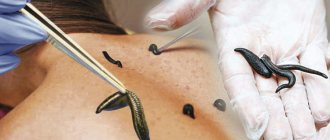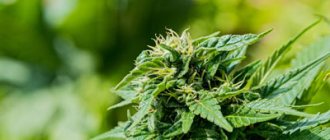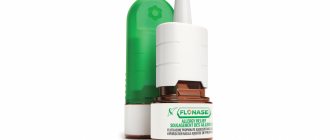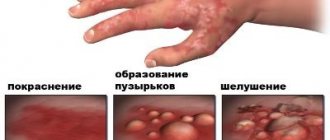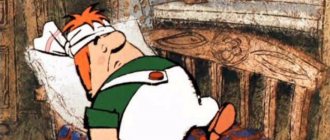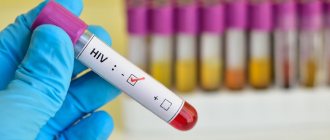History of hirudotherapy
The history of using leeches for medicinal purposes goes back more than two thousand years. Information about their use of leeches for medicinal purposes is found in the holy books of different religions - in the Bible and the Koran. These little bloodsuckers saved the Egyptian pharaohs from high blood pressure, headaches and other ailments
Legend has it that the Egyptian queen Cleopatra was able to become pregnant only thanks to leeches. It was a matter of honor to give birth to an heir from Julius Caesar, but neither the best Egyptian aesculapians nor folk remedies could save the queen from infertility. In desperation, she listened to the advice of the unknown doctor Cleoman, who recommended that she be given leeches. After just a few sessions, the queen felt that she was expecting a child. In gratitude for this, images of leeches appeared on the walls of the tombs of the Egyptian pharaohs.
The founder of the healing method called hirudotherapy is considered to be the Greek poet Nikandros from Colophon, who back in the 2nd century BC. e. along with the treatment of snake and insect bites, he was the first to describe the beneficial properties of the leech. The name of the method comes from the Latin word Hirudina, which means “leech”. The first methods of hirudotherapy were described by Galen (130-200) and Avicenna (980-1037).
In the Middle Ages in Europe, treatment with leeches became an officially recognized method and gained enormous popularity, which later had extremely negative consequences. Leeches were sold everywhere, doctors prescribed them for literally all diseases, sometimes prescribing them in unimaginable “dosages” - up to 200 leeches in one session! Such excesses in treatment greatly damaged the reputation of leeches, and their effectiveness began to be questioned.
Hirudotherapy reached its peak at the end of the 18th – beginning of the 19th century. Almost any disease was treated with the help of leeches, which led to the establishment of blood-sucking production in many European countries. This method was most popular in France, which then began to export leeches to England. From Napoleon's records it is known that six million leeches were imported from Hungary alone during the year to treat the soldiers of his army.
In Russia, occupational therapy has become very popular thanks to the great doctors Pirogov, Mudrov, and Zakharyin. N.I. Pirogov (1816-1881) when summarizing observations of military field practice during the Crimean War and the Caucasian expedition of Fr. G.A. Zakharyin (1829-1987), during his 45 years of practical work, also used leeches for various diseases, including for the treatment of the royal family. In his lecture G.A. Zakharyin told a case when one patient’s bleeding did not stop for several days with any of the medications (nosebleeds were caused by menstrual irregularities). However, the blood stopped immediately as soon as the leeches were placed.
The leech fishery in Europe reached such proportions that soon the number of these valuable creatures in nature decreased significantly. Ponds and other bodies of water, once teeming with leeches, are empty. Then European entrepreneurs began to rent entire lands in Russia, catch leeches in them and transport them abroad. But soon it became a very profitable business for our country. The export of leeches brought an annual income of more than 6 million rubles in silver, which is quite comparable to the export of grain. If you consider that a cow could be bought for only 3 rubles, it becomes clear what scale the trade in leeches had reached.
In 1850, the Russian authorities put a barrier to the destruction of leeches, prohibiting their capture and export, and issued a decree on the creation of special nurseries for breeding leeches.
The first leech farm appeared in Moscow at the beginning of the 19th century. About 700 thousand leeches were grown there, which were in great demand not only among doctors, but also among people of other specialties. Even barbers (hairdressers) and shopkeepers kept leeches and, on occasion, gave them to those in need. Of course, any self-respecting doctor always carried a jar of leeches with him. In those days, “letting out the bad blood” meant getting rid of pain and suffering, rejuvenating the body and injecting fresh strength into it. Therefore, bloodletting was considered the only dignity of a living healer. At the beginning of the 19th century, about 30 million leeches were used annually in Russia. There was not a single pharmacy that did not sell bloodsucking doctors.
With the development of science and the medical industry, the need for leeches gradually disappeared. Strong medicines and antibiotics have appeared that can quickly destroy bacteria and cope with infections. Bloodletting was noticeably inferior compared to them, and the other advantages of a medicinal leech were not yet known at that time. Therefore, by the beginning of the twentieth century, after the October Revolution, interest in hirudotherapy had weakened significantly.
Interest in leeches flared up with renewed vigor only in the 1990s. This was significantly facilitated by the emergence of new, previously unknown scientific data showing that the effect of leeches is not limited to bloodletting alone. The discovery of more than 15 biologically active substances with unique healing effects in the secretions of the salivary glands of the medicinal leech created a sensation in the medical world. Scientists have still not been able to artificially obtain such natural compounds. Hundreds of millions of dollars are being allocated to work on their creation in the USA, Israel and England. But even with the help of genetic engineering, this issue has not yet been resolved.
Currently, hirudotherapy methods are used not only in folk medicine, but also in official medicine. Doctors in America and Europe actively use leeches in ophthalmological practice and plastic surgery, and Chinese doctors treat atherosclerosis using hirudotherapy. In Russia, leeches are used in the treatment and prevention of many diseases, mainly of a non-infectious nature. Doctors use leech treatment along with herbal medicine and reflexology. And the leech itself is recognized as a medicine and is included in the Register of Medicines of the Russian Federation. There is a World Society of Hirudotherapy, and international congresses on hirudotherapy are held.
Author's courses. Leeches. 8-800-100-88-46.
General idea.
Hirudotherapy - a system of knowledge on preserving and restoring health using biologically active enzymes of the salivary glands of living leeches and hirudotherapy - the use of medicinal leeches for therapeutic and preventive purposes - are some of these methods.
It is known that the general state of health of the body, the functions of its systems and organs is manifested in appearance, primarily by cosmetic defects of the skin. Their appearance also depends on age, exposure to adverse internal and external factors. Hence the growing interest in non-surgical interventions such as hirudotherapy on the part of professionals and spa users. Hirudotherapy, as a method of primary and even secondary prevention of diseases and pathological conditions, is indispensable as a means of monotherapeutic influence. Moreover, the psychotherapeutic and physiological aspects of the effect of leeches on the human body are so great that one cannot but agree with the need to provide the therapeutic and preventive process with legislative and constructive and methodological documents in the field of hirudotherapy and SPA technologies.
History of origin.
Leech treatment has been around for as long as humanity. Our ancient ancestors also noticed that leech bites could be beneficial. The discovery of these healing qualities occurred almost simultaneously in Ancient India, Egypt, Iran, and China. The Greeks and Romans used this method; from the latter, treatment with leeches received its modern name hirudotherapy. After all, hirudina translated from Latin means “leech.”
Ancient world
The first evidence of the development of hirudotherapy in the Ancient world was found in Egypt. During excavations in the tomb of the pharaoh, archaeologists discovered a painting that was unusual in its content. It depicted a healer placing a leech on the parietal part of the head of the late ruler. It is known that the Egyptians considered hirudotherapy effective for restoring potency and treating urological problems.
In many nations, leech is associated with procreation and not only for men. The legend about the beautiful Cleopatra, who could not get pregnant, has survived to this day. But a bet was placed on the birth of a son from Caesar in a big political game. The queen turned to the most famous doctors, but their advice did not help. Then the queen decided to entrust the fate of herself and the state into the hands of the unknown doctor Cleoman. He advised the queen to undergo treatment with leeches , and after a short time Cleopatra became pregnant. In gratitude for finding her son, Cleopatra ordered to depict these inconspicuous but healing creatures on the walls of tombs and sacred buildings.
Descriptions of how to treat people with leeches are found in Indian, Jewish, and Persian texts. Hippocrates, Galen and Pliny the Elder wrote about treatment with a “living needle”. The latter compiled a detailed description of blood-sucking leeches and their healing properties. He paid special attention to the positive effect of leeches in febrile conditions. In Ancient Greece, this method was widely used by the physician Nikander from Colophon. But, as we see, many doctors, famous healers and different cultures can challenge the primacy. In Ancient Armenia, young men resorted to hirudotherapy to have healthy offspring, and those who were about 65 years old to prolong life. Particular attention was paid to the treatment and prevention of prostate adenoma. The great Avicenna devoted deep medical research to hirudotherapy.
Middle Ages
As we see, hirudotherapy covered different areas of medicine, was loved and revered by kings and ordinary people, but then World History intervened. With the onset of the early Middle Ages, called the “Dark Ages,” the knowledge accumulated by the doctors and healers of antiquity was partly forgotten and partly questioned. The blood-sucking creatures seemed seditious, prone to vampirism, heretics. And it already smelled like a fire. Moreover, the Catholic Church has banned the use of leeches for medicinal purposes. Therefore, hirudotherapy was preserved only among rural healers. Many areas of knowledge have declined. There is reason to believe that even at this time they resorted to hirudotherapy, but this area of knowledge could not develop.
But the Renaissance, having revived much lost knowledge, did not forget the treatment with leeches. We can safely say that hirudotherapy has become fashionable. It was used for heart disease, shortness of breath, dizziness, infertility and even obesity. The latter was very relevant. After all, the Renaissance is not only the flowering of the arts, but also the cult of a large body and abundant food. The negative consequences of constant feasts and libations affected health immediately. Obesity provoked heart problems and influenced the development of other diseases. We had to fight it with radical means, which turned out to be the same leeches. Small blood-sucking creatures allowed people to lose weight so much that they lost up to 10 kg of weight, not only without experiencing any damage to their health, but also feeling much better than before. This is written in ancient manuscripts found during excavations of libraries of that time. Treatment sessions with leeches during the Renaissance became so common that artists captured them on their canvases. Thus, the great Botticelli, who devoted himself to the cult of refined and reverent beauty, depicted unsightly leeches during a healing session.
The search for new areas where leeches could be used continued and in 1665 Hieronymus Nigrisoli published an essay entitled: “On the application of leeches to the internal parts of the uterus.” This is how leeches began to be widely used in gynecology .
18th century – 19th century
Hirudotherapy proved itself so well that doctors were constantly searching for new areas of its application and, according to researchers, by the end of the 18th century, the leech “occupied the red corner of the pharmacy.” It was the magnificent age of Enlightenment: balls, receptions, the first educated coquettes. Leeches have become an indispensable cosmetology product for fashionistas. To have a natural blush and maintain strength at the ball, leeches were placed behind the ears. The reason for the effectiveness of such procedures was revealed much later. It turns out that a leech bite causes a response in the body - the release of endorphins, hormonal substances that cause an elevated mood.
At the turn of the 18th and 19th centuries, hirudotherapy reached its peak. Patients highly appreciated its effectiveness, accessibility to all segments of society and absolute painlessness. It was at this time that almost any disease began to be treated with leeches.
In 1884, John Highcraft, a professor at King's College Birmingham, obtained an extract from the body of a leech that influenced the fluid properties of blood and prevented it from clotting. Further research helped to discover a special substance contained in the salivary glands of the leech. It was called hirudin.
This discovery, very important in itself, led at that time to undesirable consequences - hirudotherapy began to be considered a panacea. It was prescribed for any ailment. Leech export emerged. A very profitable business for those times. Then European entrepreneurs began to rent entire lands in Russia, catch leeches in them and transport them abroad. But our country realized in time how profitable it was and became the main supplier of healing bloodsuckers. The export of leeches brought an annual income of more than 6 million. rubles in silver. This was a lot of money at that time, since a cow could be bought for only 3 rubles. But the profitable enterprise turned into the destruction of leeches and the authorities banned their catching and export and even began to create nurseries for their breeding. The great Russian doctors of that time, among whom was Pirogov, also considered hirudotherapy to be the strongest remedy for treating many ailments.
With the advent of the 20th century, the situation changed. Synthetic drugs and antibiotics have appeared that make it possible to quickly destroy bacteria and change the microflora of the body. The “stunning” success of addictive drugs, new at that time, displaced the leech from its pedestal. But in the 1990s, interest in leeches flared up with renewed vigor. Scientists have proven that the effect of leeches is associated with the biological value of its saliva.
The discovery of more than 15 biologically active substances with unique healing effects in the secretions of the salivary glands of the medicinal leech created a sensation in the medical world. Until now, scientists have not been able to artificially obtain such natural compounds, despite the millions of dollars spent by developed countries. Today, even genetic engineering cannot solve this issue. Therefore, the material given by nature itself is actively used in various fields of medicine: ophthalmology and plastic surgery, in the treatment of atherosclerosis, in urology and gynecology, immunology and cardiology.
In Russia, leeches are used in the treatment and prevention of many diseases, mainly of a non-infectious nature. Nowadays, when the side effects of taking synthetic drugs have been proven, a method of treatment that has been proven for centuries is becoming popular again.
Now hirudotherapy is considered one of the most promising areas of psychosomatic science and practice of the 21st century , which is constantly and intensively developing. In hirudotherapy, the main principle is an individual approach to the patient. For each person, their own treatment regimen is developed, taking into account the basic mechanisms of the development of the disease and the characteristics of the body. Availability, effectiveness, relative ease of use, almost complete absence of side effects, the possibility of use regardless of gender and age, make treatment with leeches increasingly popular all over the world.
The author of the article is Doctor of Psychology, Professor Alla Sergeevna Konkova.
Share on social media networks
RќСЂР°РІРёС‚СЃСЏ
Hirudotherapy courses. Leeches. 8-800-100-88-46. USA

